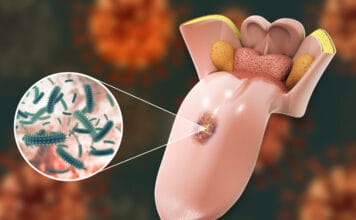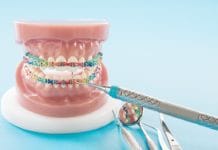1. Dental hygienists can serve in multiple capacities, including clinician, educator, researcher, administrator/manager, and advocate. All these roles are interconnected through their common application to public health.
Dental hygienists can play multiple roles and contribute to the improvement of the public's health through oral health promotion. These roles include but are not limited to a clinician, educator, researcher, administrator/manager, and advocate. Some of these roles are used interchangeably as clinicians are often educators and advocates as well. These roles are not exclusive and can be used in many capacities and settings.
Wilkins, E.M. (2009). The Professional Dental Hygienist. In L. Mueller-Joseph, D. F. Homenko, E.M. Wilkins, C.J. Wyche, Clinical Practice of the Dental Hygienist (10th ed., pp.5-6). Lippincott Williams & Wilkins, a Wolters Kluwer business.
2. The dentist for whom you work is taking a vacation. They will be out of the office and have requested that you continue to see patients in their absence. What is the best place/person to find information on duties that can be performed under general supervision?
Every state has different guidelines and levels of supervision depending on the function/duty the hygienist is expected to perform. When becoming licensed to practice dental hygiene, each state has its own jurisprudence test that must be successfully completed to obtain a license to practice in that state. The fact that this test is required should highlight the importance of knowing your state's Dental Practice Act.
Supervision varies wildly between states, as well as functions that can be performed by the dental hygienist. Every time your state's Board of Dentistry meets (this can be monthly, bi-monthly, quarterly, and so on), rules regulating the practice of dentistry, including continuing education (CE) requirements, can change.
Staying current on your state's Dental Practice Act will protect you from inadvertently breaking laws by simply trusting your employer, office manager, or something that was stated in a dental hygiene group on social media. In some cases, your state dental hygiene association's current president may have the answer, but are you willing to risk your license on it? Going directly to the source of who governs and makes the rules, your state's Board of Dentistry, and reading your state's Dental Practice Act is recommended.
Scope of Practice. (n.d.). American Dental Hygienists' Association. https://www.adha.org/scope-of-practice
3. The removal of all calculus and dental biofilm in a relatively shallow periodontal pocket is an example of primary prevention.
The removal of all calculus and dental biofilm in a relatively shallow periodontal pocket is an example of secondary prevention. The treatment contributes to the prevention of disease progression by reducing the risk of continued attachment loss and formation of a deep periodontal pocket due to biofilm, calculus, and host response.
Primary prevention is measures carried out to prevent the disease from occurring. An example of primary prevention is the use of fluoride. Tertiary prevention is a method used to replace lost tissue and rehabilitate the oral cavity. An example would be the placement of an implant to replace a missing tooth.
Wilkins, E.M. (2009). The Professional Dental Hygienist. In L. Mueller-Joseph, D. F. Homenko, E.M. Wilkins, C.J. Wyche, Clinical Practice of the Dental Hygienist (10th ed., pp.5-6). Lippincott Williams & Wilkins, a Wolters Kluwer business.
4. Contrary to popular belief, dental hygiene diagnosis is a pillar of the dental hygiene process of care. Dental hygienists diagnose within the scope of dental hygiene.
The dental hygiene process of care includes assessment, dental hygiene diagnosis, planning, implementation, and evaluation. The dental hygiene diagnosis portion refers to the dental hygienist's ability to critically evaluate information collected during the assessment portion of the process of care and express the problem and cause. An example of a dental hygiene diagnostic statement would be "Bleeding on probing related to marginal dental biofilm accumulation." This does not mean you necessarily make the final decision in diagnosing the disease; it does, however, mean that you are a co-therapist with the dentist and patient in planning and implementing the patient's care plan.
Wilkins, E.M. (2009). The Professional Dental Hygienist. In L. Mueller-Joseph, D. F. Homenko, E.M. Wilkins, C.J. Wyche, Clinical Practice of the Dental Hygienist (10th ed., pp.5-6). Lippincott Williams & Wilkins, a Wolters Kluwer business.
5. Cultural diversity in the U.S. can present a challenge when delivering oral health care. To communicate successfully and respectfully, which of the following nonverbal communication skills will help dental hygienists in successfully delivering oral health care?
When delivering oral health care, hygienists often rely on nonverbal communication. Cultural differences need to be taken into consideration as the dental hygienist interacts with the patient. Successful communication includes the following:
- Follow the patient's lead for touching or personal space
- Use hand and arm gestures with caution
- Be careful interpreting facial expressions
- Follow the patient's lead in making eye contact
Wilkins, E.M. (2009). The Professional Dental Hygienist. In L. Mueller-Joseph, D. F. Homenko, E.M. Wilkins, C.J. Wyche, Clinical Practice of the Dental Hygienist (10th ed., pp.5-6). Lippincott Williams & Wilkins, a Wolters Kluwer business.
6. Lifelong learning is an ethical duty of dental hygienists.
Lifelong learning is an ethical duty of all dental hygienists:
- To ensure optimal care for all patients
- To maintain competency
- To learn scientific advances from new research
- To provide evidence-based patient care
- To apply consistent ethical reasoning
- To ensure the fulfillment of each patient's rights
Wilkins, E.M. (2009). The Professional Dental Hygienist. In L. Mueller-Joseph, D. F. Homenko, E.M. Wilkins, C.J. Wyche, Clinical Practice of the Dental Hygienist (10th ed., pp.5-6). Lippincott Williams & Wilkins, a Wolters Kluwer business.
7. An ethical issue is a common problem wherein a solution is grounded in the governing practice act, recognized law, or accepted standards of care. An ethical dilemma is a problem that involves two morally correct choices or courses of action.
Ethical issues and ethical dilemmas are two different situations. Ethical issues are more clearly defined; here, the solution is found in the governing practice act, recognized laws, or accepted standards of care. An example of this would be a patient in need of non-surgical periodontal therapy that refused treatment, at which time the hygienist proceeded with a prophy. This is not the standard of care associated with a periodontal disease diagnosis; therefore, it is an ethical issue that could result in litigation.
On the contrary, an ethical dilemma is a situation that involves two morally correct choices or courses of action. An example of this is when a patient needs to be on a 3-month recare/periodontal maintenance frequency yet can only afford to come once every six months. In this situation, it would be acceptable to compromise, whereas, with an ethical issue, a compromise could result in action being taken against the dental healthcare professional.
Wilkins, E.M. (2009). The Professional Dental Hygienist. In L. Mueller-Joseph, D. F. Homenko, E.M. Wilkins, C.J. Wyche, Clinical Practice of the Dental Hygienist (10th ed., pp.5-6). Lippincott Williams & Wilkins, a Wolters Kluwer business.












